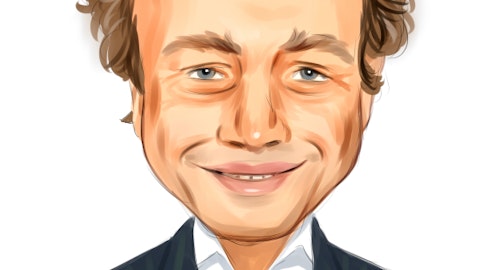Michael Rose: And maybe just finally for me, the expenses were roughly in line with what you kind of talked about last quarter. I’m sorry if I missed it in the preamble. But Luis, maybe how do you think about balancing what looks to be a pretty good NII margin inflection point here with also controlling costs, which I think you’ve done a really good job at despite the growth? Are there incremental opportunities now that it looks like NII is going to inflect decently higher to go out and continue to press in terms of hiring now that the run rate for revenue looks to be a little bit stronger?
Rob Anderson: Yes, maybe I’ll start with that, Michael. But I think our expenses will grind a little higher and then we’re always about getting good sales people in the market. There has been a lot of disruption in South Florida with a couple of the acquisitions. We are having ongoing conversations with people. But periodically, we’ll be able to have a small — what I’d say small teams like we picked up, right, five people in the last, what, six months, something like that. So we’re continuing to look to pick up strong sales people. We’re beginning our verticals on MD Advantage, that’s really hitting a stride, we expect that to increase as well. But we will see a slight uptick in our expenses, but we’ll be mindful of that. And I’d also point to the noninterest expense to average assets. I think a marker below 2% is always regarded well. We’re at 184%. I think that’s going to show well, and I’d leave it at that for right now.
Operator: The next question comes from Woody Lay with KBW.
Woody Lay: So I believe you touched on it in the opening remarks. So how much of the deposit growth in the first quarter was related to these deposit verticals that you’ve added over the past couple of months?
Luis de la Aguilera: I’d say it was maybe $40 million to $50 million in that first quarter, kind of contribute from the private client group, the Jurist Advantage and the new hires. So we’re very bullish on that. There’s been a couple of new hires that have come in here roaring. And so we are very excited to see that continue. The response from their clients has been better than expected. So we think we’re very much in line to continue hitting our numbers.
Woody Lay: And how do those deposit pipelines look heading into the second quarter? I mean, they obviously had larger books of business. It feels like you could continue to make headway in those verticals?
Rob Anderson: I think, we’re going to in the second quarter, I mean, even as of, we still have plenty of cash sitting on the balance sheet and we’ve had some higher priced pub funds move off. So those teams will continue to bring good solid deposits in. I think we have the right teams to support the loan growth that we have. I think the loan to deposit ratio will tick up as we’re pricing down some of the higher priced non-relationship funding. If you recall, when we were back in December of last year, we had probably over 100 million of fundings in December alone. And to fund that, we had to, one, get on some borrowings but also get some higher price up fund money to do that. Now that we have the teams generating relationship funding, we can let that other stuff go.
So I think what you’re going to see is that we have the teams capable of supporting the loan growth, which has been robust here over 15% per year and then we’re supporting that with deposits around the same number.
Woody Lay: And then I did want to shift over to loan growth and just interested on how the pipelines were looking into the second quarter. Are there any specific segments that you expect to drive the strong growth in the year?
Luis de la Aguilera: I believe — we check our pipelines on an ongoing basis. Management works very closely with the lending teams. We do this on a weekly basis and it’s a deep dive. The pipeline right now is very much on track to hit our numbers for the quarter. I think we are going to continue seeing very strong activity from — on our HOA side, on the Yacht Lending side. We have — on the multifamily side, it’s pretty diversified. And I think it’s going to continue to be in line with what we’ve been seeing that it’s probably about 40% of what’s coming in is non-CRE sources. So I think we’re going to continue seeing more of the same. And I’m very excited and pleased that we’ve been able to in a three and half year period of time really move the portfolio in the way that it has.
So we’re almost at 30% non-CRE where this Bank at one point in time was probably 98%. So it’s going to be more of the same. A lot of this is also coming in from these diversified business verticals. Of the seven that we have, four were created as deposit aggregators but the HOA one in particular also brings in a lot of business on the loan side.
Operator: The next question comes from Feddie Strickland with Janney Montgomery Scott.
Feddie Strickland: Just wanted to start with the discussion around the cash used to pay off some of the wholesale borrowings and how that affects earning assets. I mean, I know we’re going to have continued strong loan growth here. But can we see earning assets potentially a good bit — earning asset growth a good bit slower or maybe even down linked quarter just with some of the pay down of those wholesale borrowings?
